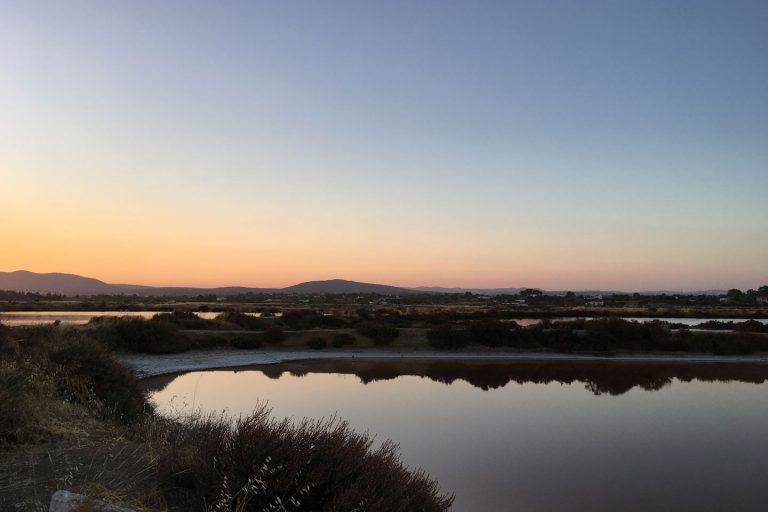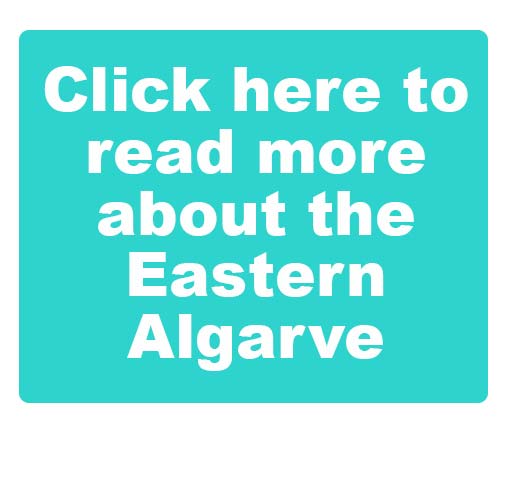Introduction
When considering the delights of Portugal, the Eastern Algarve is often overlooked.
Why? I’m not really sure.
It has some of the best beaches in the world, great weather and wonderful food – which on the whole is inexpensive.
It has a rich history and culture, and some great architecture. The people are friendly. The crime rate is relatively low. There are some lovely walks and a great cycle path (the Ecovia).
On top of that, it really isn’t crowded.
Even in summer, if you’re willing to walk a little way, you’ll find you have the beach to yourself.
So what are the best things to do in the Eastern Algarve?
I won’t be naming them all here, but what I will do here is give you a taster.
Walk around the Mercado in Olhao
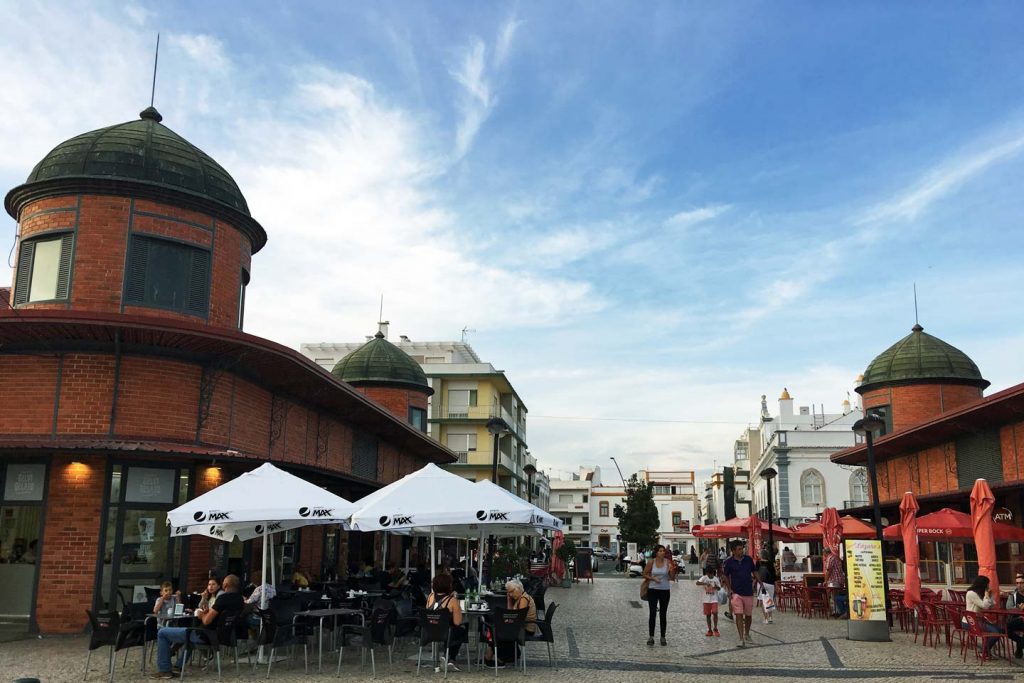
Olhao is a thriving fishing port, set within the Ria Formosa. Down at the quay you’ll find a pair of buildings dominating the seafront.
Designed by Gustav Eiffel (of Eiffel Tower fame) and built-in 1915, these two market buildings house Olhao’s bustling Mercado – fish and seafood in one; meat, fruit and veg in the other.
Inside you’ll find locals choosing what they want to eat that day, and the odd tourist taking photos. With continuous noise and movement, and a riot of colour, you’ll feel that you’re at the heart of what the Algarve is all about.
Outside you’ll find cafe’s and bars overlooking the Ria Formosa Natural Park, and across the road, restaurants galore, all selling a stunning array of fish, seafood and meat dishes.
Why not go and have a look?
Eat a Fish Cooked on Coals
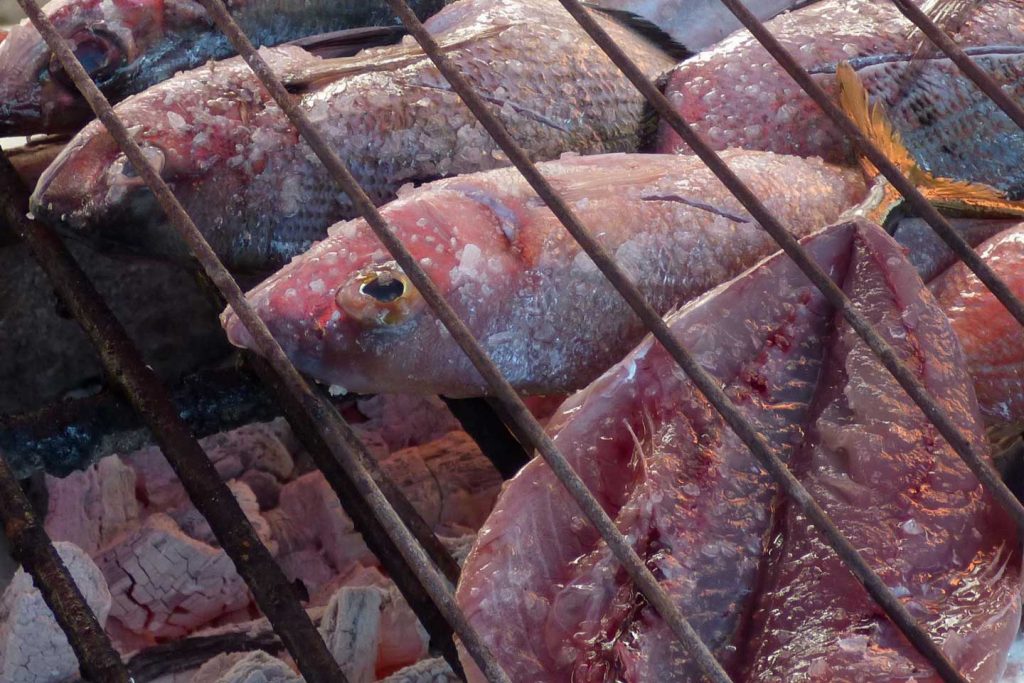
The Eastern Algarve is renowned for the freshness of its fish and seafood – and why not? Other than tourism, fishing is the main industry here.
In Fuseta, you can sit at a table at one of the quayside restaurants and watch the catch come in, so you know your fish is going to be fresh!
You can sample one of the excellent Portuguese wines available while you wait, and then sit back and relax whilst watching your chosen fish, maybe a dourada (sea bream), or a Robalo (sea bass), being heavily salted and cooked on the coals only feet from your table.
The aroma is wonderful, and the taste even better.
Or maybe just visit the local Mercado to choose your own fish, and take it back to barbecue for yourself.
Whichever you choose to do, you’ll taste something you won’t forget in a long time!
Catch a Ferry to one of the Barrier Islands
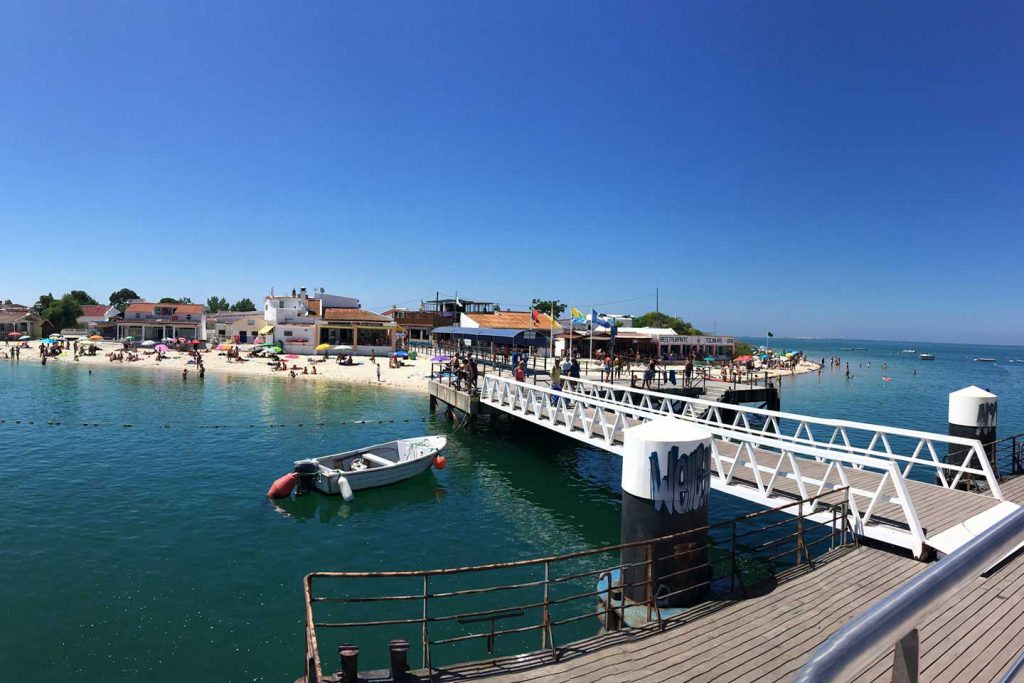
From Faro to Cacela Velha, the coast of the Eastern Algarve is protected by five barrier islands. In fact, the Tsunami caused by the great earthquake of 1755 was thwarted in Faro because of these islands. Faro survived and subsequently became the Administrative centre of the Algarve, since Lagos had been virtually destroyed.
Nowadays, these islands offer something a little more relaxing.
Catch a ferry out to Culatra, Farol or Armona.
Take your swimming costume, a beach brolly, cash (cards aren’t accepted), and enjoy a day on an island paradise.
Each island has its own little community, living in old fishermen’s cottages.
There are also restaurants that serve stunning food, and beach bars where you can sit and relax. There are beaches that stretch for miles, becoming emptier as you wander along them, so that eventually, you’ll be the only person around – even in summer. All of these beaches are ‘blue flag’, which means the water is wonderful to swim in.
Why not go and sample the delights that these islands have to offer? You won’t regret it.
Take a Stroll around Cacela Velha
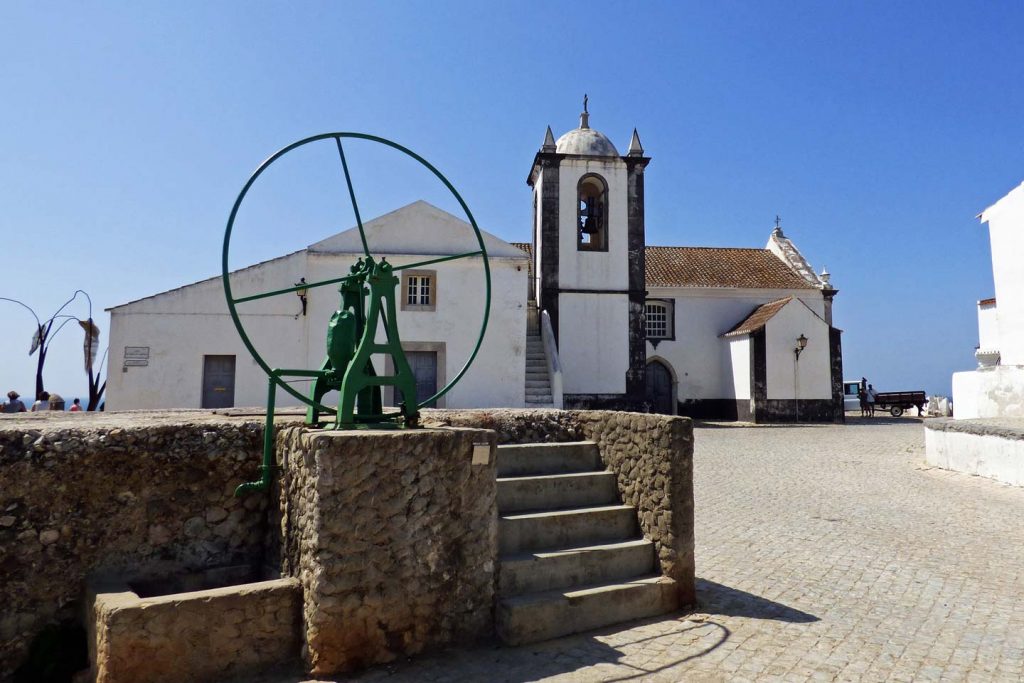
Cacela Velha is small but stunning.
It sits on top of a hill at the eastern end of the Ria Formosa, next to the Fortaleza de Cacela (Cacela Fort), the building of which was completed in 1794.
I stumbled across it on one of my walks. I’d been told about it, but had never made the effort to see it. Having found it, I wish I’d gone earlier.
There is no modern development here, just a number of typically Portuguese houses, a couple of restaurants and a view of the beach beyond the mouth of the Ria Formosa.
You can walk around Cacela Velha in a matter of minutes – but the visit is worth it, if only for the view.
The beach and the Ria Formosa stretch out below the village. You can see for miles, along the beach towards Cabanas, or eastwards towards Monte Gordo, where you’ll see the only high rise hotel on the Eastern Algarve.
You can walk down to the beach (‘Beware of Snakes’ says the sign, but I’ve never seen any) and take it in at ground level. It’s well worth it, although the walk back up to Cacela Velha is a bit of a drag.
The other plus is: if you like golf, the Quinta da Ria golf club is only a short distance away.
Go Dolphin Watching
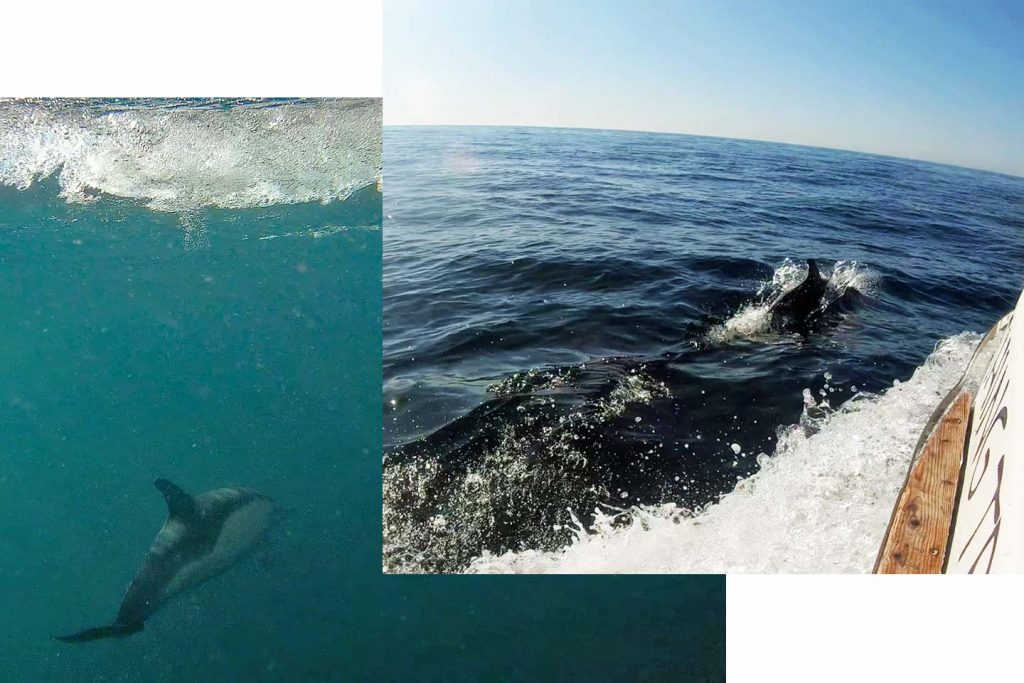
You’re by the sea, and you decide to go on a boat trip.
You decide it will be nice to see dolphins at the same time…
I’ve done this, with Lexi. She’s 11. She was really excited beforehand and she was excited when we headed out to sea.
Her excitement started to dissipate a little as the minutes ticked by… 10 minutes, 20 minutes, 40 minutes, 1 hour. She looked at me and rolled her eyes… and said…
And then suddenly?! There they were!
A whole pod of dolphins!
Her eyes lit up, as did those of everyone else on the boat!
We watched the dolphins dive underwater, leap above it, flip from one side of the boat to the other.
I watched Lexi come to life, smile, laugh, strain to see such a stunning sight…
And all I had to do was watch her enjoyment… as well as the dolphins, obviously!
If you do nothing else in the Eastern Algarve, at least do this…
Walk across the Ponte Romano
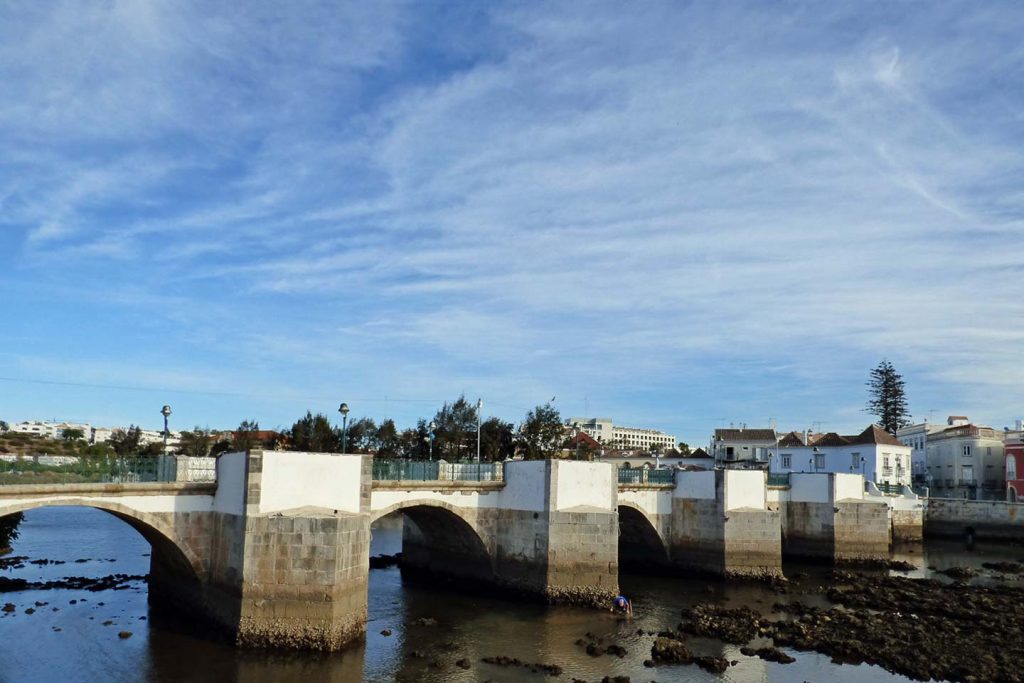
Tavira is a lovely town; full of life.
It has a castle, it has churches, it has cafes and bars. With streets that I love to wander through, it also has restaurants where you can sit and sample stunning seafood. It has a ferry out to the Ilha de Tavira. There are has saltpans that you can stroll through.
But what I have grown to realise is that the most important thing to the town is the Gilao – the river that flows through it.
The Gilao meanders to the sea via the Ria Formosa
Across this lies the Ponte Romana – the Roman Bridge.
Is it a Roman bridge? No, but it was thought that it was built upon the foundations of what was once a Roman bridge, a bridge that carried a Roman road running from Faro to Castro Marim.
However, after a recent archaeological survey, it’s now believed that the original bridge was Moorish.
Anyway, the current bridge was erected in 1667, and it’s now for pedestrians only.
Walk across it, lean over the side and watch the fish gliding through the water below.
Walk along the banks of the river and look back – it’s stunning.
Tavira has lots to offer, but make sure the Ponte Romana is part of your visit.
Enjoy a Pastel de Nata
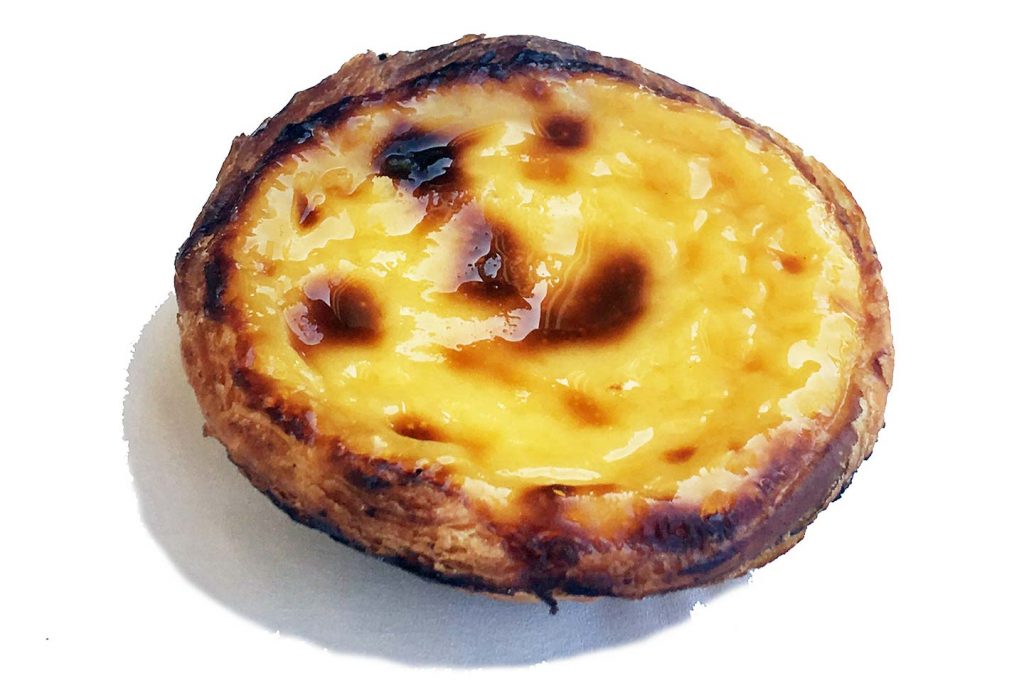
Mmmmm… Pastel de Nata…
If you like a pastry, and if you like custard, then this is the treat for you!
It’s a Portuguese custard tart, dusted with cinnamon and then caramelised.
Originating in Lisbon and now eaten all over Portugal and its former colonies, the Paste de Nata is a real treat.
Find yourself a cosy little Pastelaria, take a seat at an outside table (preferably with an umbrella offering shade!), and order a Pastel de Nata and a coffee.
When it arrives, don’t rush it – nobody really rushes in Portugal.
Take your time. Look at it, smile at what is to come, then pick it up and take a small bite… delicious!
You’ll first sense the crispy flakiness of the pastry, which is soon followed by the sweet creaminess of the filling.
They’re just lovely, and give you a real sense of Portugal.
I know it’s not a treat purely from the Eastern Algarve, but it’s one you shouldn’t miss!
Enjoy!
Visit the Roman Villa in Estoi
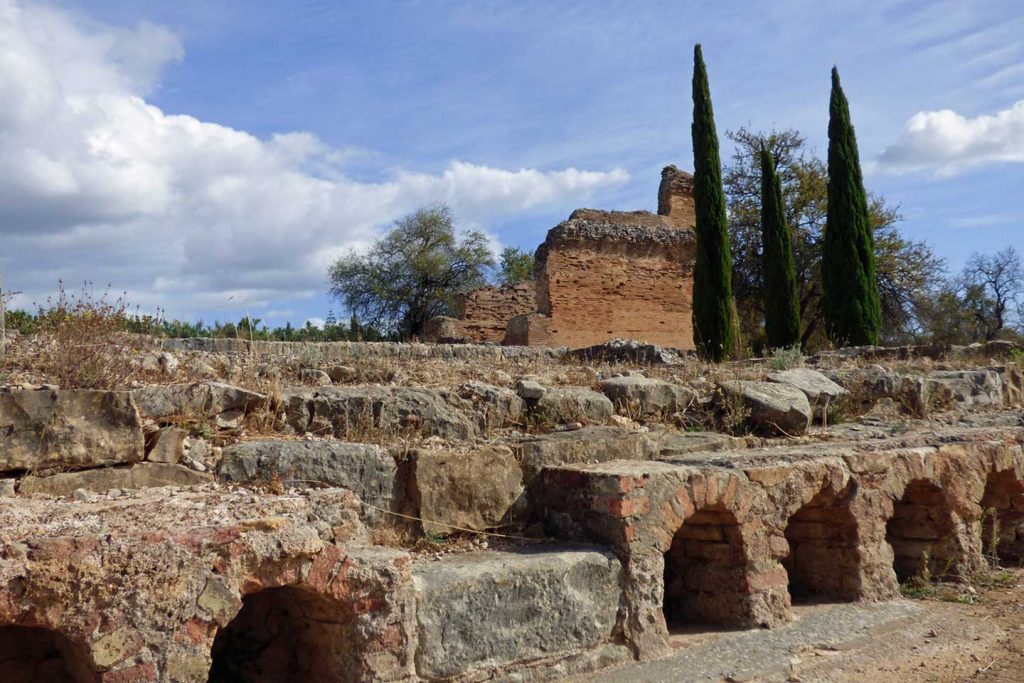
Just north of Faro and Olhao, you’ll find Estoi, a pretty little town in a rural area. There’s a palace, a church and a lovely atmosphere – it’s very laid back and charming.
But what makes it stand out and eligible for my list of things you should do in the Eastern Algarve? The Roman Ruins of Milreu.
Here you’ll find some of the best Roman remains found in the Algarve.
Excavated in 1877 by Estacio da Veiga, they date back to the 1st/2nd century AD (probably just a farmhouse at this point), with a large luxury villa and temple being added later, probably in the 3rd century AD.
You can still see the columns that surrounded the villa’s central courtyard, and within the temple you’ll find superb mosaics, suggesting that the temple was dedicated to the Gods of the sea. Later, the temple became a church, then a mosque, and then was simply used for farm equipment.
You’ll also find a bathhouse on the site, adorned with further exquisite aquatic mosaics, as well as a cold water plunge pool, changing rooms and underground heating system.
I know that archaeological sites aren’t to everyone’s taste, but I think that they’re well worth a visit.
Roman Ruins of Milreu
Rua de Faro
Near Estoi
Faro
Central Algarve
Phone: +351 289 997 823
Hours:
Tuesday to Sunday – 09:30 to 12:30 and 14:00 to 17:00 (18:00 in Summer)
Closed Mondays, Good Friday, Easter, May 1 and Christmas
Go Cycling or Walking in the Ria Formosa
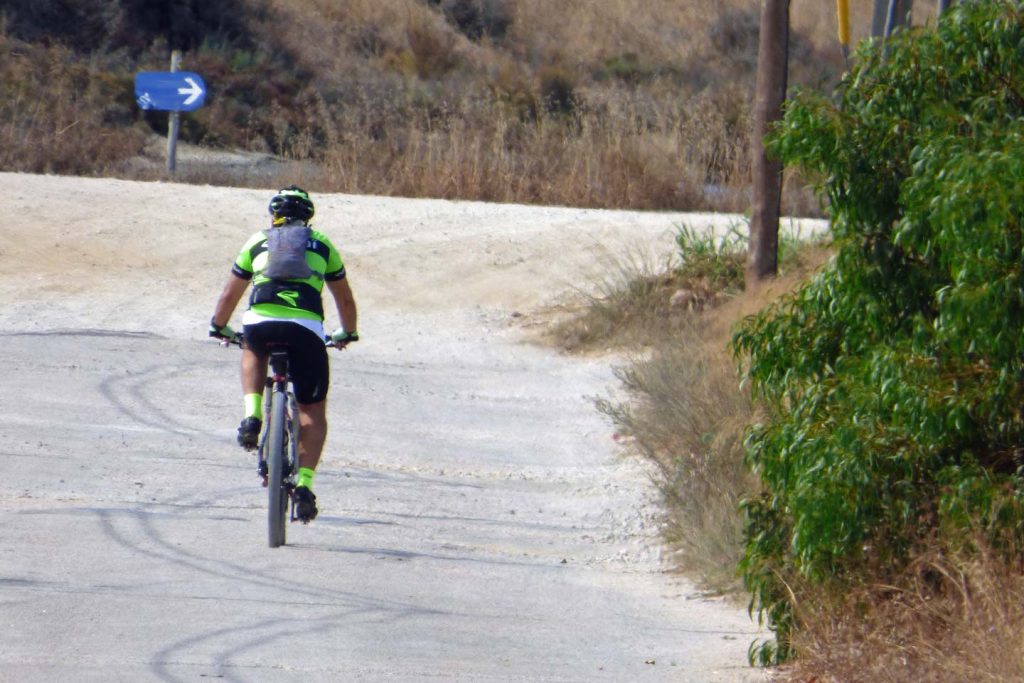
From Cacela Velha in the east, all the way through to Faro in the west, the Ria Formosa winds its way along the coast, separated from the Atlantic Ocean by five Barrier Islands (Ilha da Barreta/Deserta, Ilha da Culatra, Ilha da Armona/Fuseta, Ilha de Tavira and Ilha de Cabanas.
It’s a Natural Park, covering an area of over 170km2, protected by law under the category of Natural Reserve since 1978, due to its diverse ecosystem and beauty.
The Ria Formosa is important to the locals for its fish, seafood, salt and tourism, and it’s important to the tourists for its access to nature, its calm protected waters, and its beauty, as well as the many small towns and villages that lie within it.
It has a lot to offer:
A calm waterway, linked to the Atlantic ocean by inlets.
Marshes, sand dunes, mudflats, long sandy beaches.
Saltwater lagoons, freshwater lagoons, salt pans.
Dusty tracks, quiet roads, sandy paths.
Birds – hundreds of different species, both resident and migratory.
Fish, seafood, small mammals.
Local restaurants and bars.
The opportunity to kayak, paddleboard, kite surf.
The opportunity to cycle and walk for miles through some of the most important wetlands and bird-watching areas in Europe, along paths that you’ll rarely share with anyone else.
A chance to relax and simply appreciate what is good about life…

